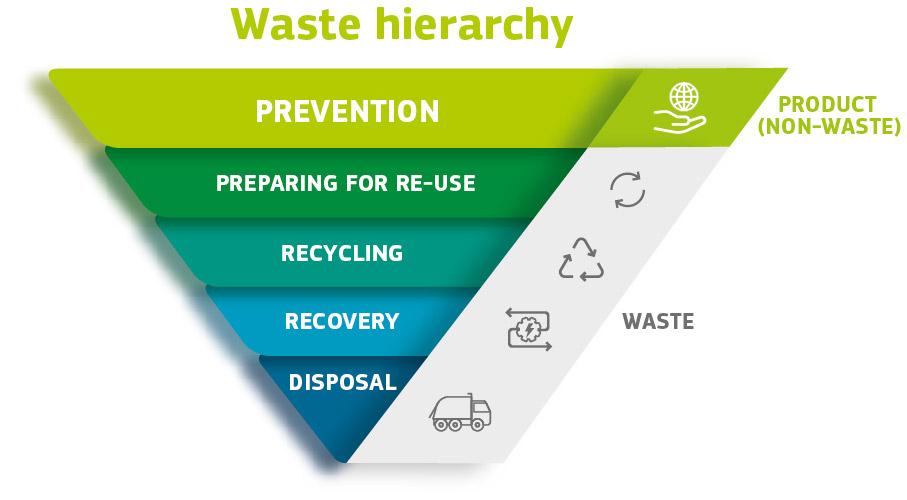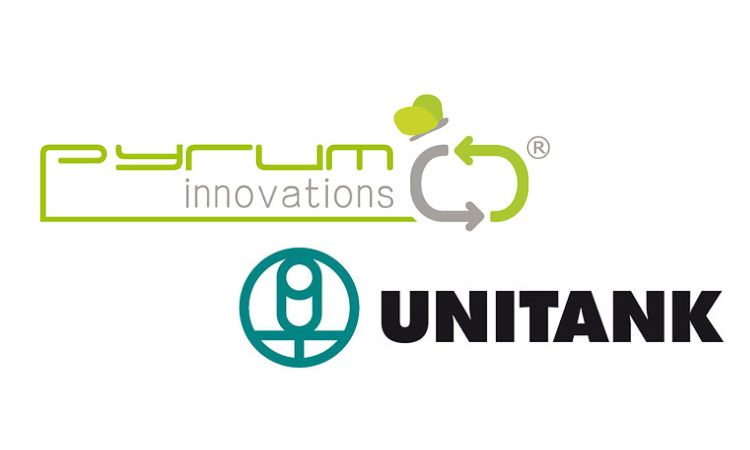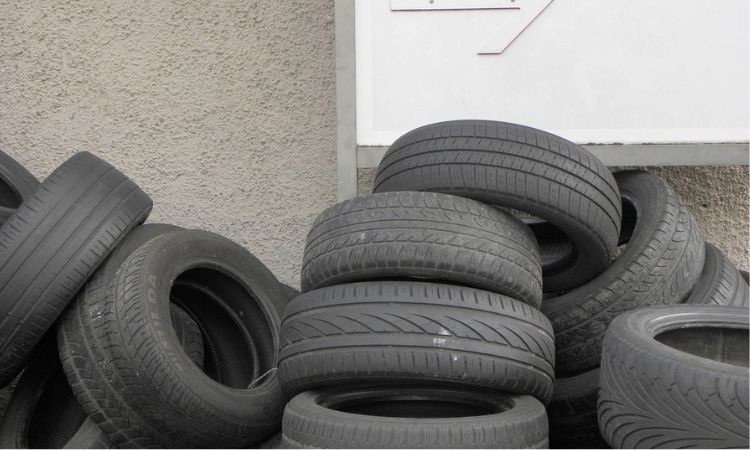Weibold Academy: Regulatory issues in chemical recycling of end-of-life tires – EU regulation (part II)
Weibold Academy article series discusses periodically the practical developments and scientific research findings in the end-of-life tire (ELT) recycling and pyrolysis industry.
This article is a review by Claus Lamer – the senior pyrolysis consultant at Weibold. One of the goals of this review is to give entrepreneurs in this industry, project initiators, investors and the public, a better insight into a rapidly growing circular economy. At the same time, this article series should also be a stimulus for discussion.
For the sake of completeness, we would like to emphasize that these articles are no legal advice from Weibold or the author. For legally binding statements, please refer to the responsible authorities and / or specialist lawyers.
Sustainability as a driving force
Modern chemical tire recycling (pyrolysis) plants produce environmentally friendly chemical raw materials, and thus they support the overarching and specifically specified goals of the EU Green Deal and the UN Sustainable Development Goals. In addition, they can make a significant contribution to reducing GHG emissions in the manufacture of tires.
Just a few weeks ago, as part of the Recovered Carbon Black Conference in Amsterdam (The Netherland), the two world-market leading tire manufacturers Bridgestone and Michelin publicly announced their serious intention to increase the use of Recovered Carbon Black (rCB) from the chemical recycling of end-of-life tires, solidifying the possibility of reducing the dependency of the entire tire industry on petrochemicals without compromising on performance.
As the tire industry is by far the largest consumer of the industrial, virgin Carbon Black (vCB) there is an enormous potential demand for Recovered Carbon Black. If only 10% of the fossil-based Carbon Black (vCB) will be replaced by rCB in the future, the chemical recycling industry will have to produce up to 1.5 million tons of rCB of consistent quality every year (at the same time, this will save almost 3 million tons of CO2 emissions annually).
Regulatory Issues in Chemical Recycling
The chemical recycling of end-of-life tires (ELT) through pyrolysis is a recovery operation by which waste materials (e.g., end-of-life tires) are reprocessed into chemical products (recovered Carbon Black and tire-derived-oil (TDO)) to become input feedstock for chemical plants and other industries.

Waste hierarchy. | Image by European Commission.
Therefore, chemical recyclers (of end-of-life tires) are both waste managers and manufacturers of substances who must comply with waste management and chemicals legislations. (ECHA, 2021).
A hurdle still to be overcome is that from a historical point of view EU policies on waste and chemicals management did not contain the circular economy dimension and were mainly oriented toward creating a non-toxic environment and efficient waste management. Circular Economy policies focus on maximum re-use and recyclability of materials to safeguard natural resources and produce less waste. Many researchers emphasise that regulatory and technical issues in recycling arise due to the lack of reconciliation between the objectives and means for their achievement in these regulatory areas (ECHA, 2021).
As the present EU regulation on waste, materials and the related risks has not been designed for the Circular Economy (CE) objectives the pursuit of the new economy model (CE) raises a multitude of regulatory challenges that need to be addressed (Alaranta & Turunen, 2021).
In a longer-term perspective the aim should be to erase the existing border between waste and chemicals regulation and create a single regime for the regulation of materials and their flow and new methods for life cycle assessment (LCA) of the Circular Economy are urgently needed for the transitional period (Alaranta & Turunen, 2021).
A recently published report by ECHA aims to discuss, inter alia, the obligations of recyclers as waste managers and manufacturers of substances and covers uncertainties and complexities that emerge in the implementation of processes compliant with legal obligations.
Chemical recycling under waste management regulation
Management of waste is covered by the Waste Framework Directive (WFD) and related regulations where, inter alia, the main principles for the classification of waste are prescribed.
The aim of the Circular Economy is to minimise the amount of generated waste and where waste is generated, to efficiently harness it back to production processes. This ‘commodification’ of waste is one of the key challenges (Alaranta & Turunen, 2021) in realizing a viable Circular Economy.
End-of-waste criteria and guidance on their implementation are crucial for the confidence in the quality and safety of recyclates and their uptake on the market (CEN-CLC BTWG 11, 2018, cited in ECHA, 2021).
Currently, the WFD specifies the conditions when waste ceases to be waste in Article 6 where it outlines four general end-of-waste criteria:
- the use of a substance/object for a specific purpose;
- the existence of market demand for a substance/object;
- compliance of a substance/object with relevant legislation, technical requirements or standards applicable for the products;
- absence of adverse impact on human health and the environment due to the use of a substance/object.
Finally, the WFD delegates the task of determining the end-of-waste status to the EU Member States while mentioning that the EU wide end-of-waste criteria could be developed where relevant. Even the European Commission (2018) noted that currently, it is not clear what measures are taken in the Member States to ensure that the recycled materials meet the end-of-waste criteria and whether they are sufficient and effective.
Different regulatory end-of-waste regimes across the EU may therefore lead to difficulties in introducing the recycled materials on the EU market and safety concerns due to various interpretations of the end-of-waste in the Member States (Alaranta & Turunen, 2021, cited in ECHA, 2021). Chemical recycling and REACH
REACH is a regulation adopted by the European Chemicals Agency (ECHA) to improve the protection of human health and the environment from the risks that can be posed by chemicals. A recycler who recovers chemical substances by means of a selected chemical recycling technology becomes a manufacturer of substances and a REACH duty-holder (de Römph & Van Calster, 2018, cited in ECHA, 2021). According to REACH, manufacturers of substances should therefore register their substances on their own or in a mixture (Article 3(1)) if they are manufactured in quantities larger than one tonne per year (Article 3(2)).
Pyrolysis oil (TDO) from waste rubbers and end-of-life tires meets the criteria of intermediate substances under REACH (Article 3(15)) and is registered accordingly (EC / List no.: 948-949-8).
According to REACH, intermediate is a “substance that is manufactured for and consumed in or used for chemical processing in order to be transformed into another substance” (ECHA, 2017, cited in ECHA, 2021).
However, it should be pointed out that according to ECHA (2021), following the judgement of the Court of Justice of the European Union (C-650/15P on acrylamide (2017)), open discussions about the definition of intermediate are still ongoing.
REACH offers an exemption from registration for substances on their own, in mixtures or in articles that have been already registered and are recovered (Article 2(7)). This exemption is applied if the recovered substance is the same as the registered one and if the recycling operator has access to information required by REACH (Articles 31 or 32). To benefit from this exemption, the recyclers should be aware of the previous registration of the substance and provide analytical information justifying the sameness of the previously registered and recovered substance (ECHA,2021).
Well defined substances are those for which qualitative and quantitative aspects of the composition can be sufficiently identified. In turn, based on constituents, well-defined substances can be mono constituent (as Recovered Carbon Black; Editor's note) with one main constituent present in concentration over 80% w/w (ECHA, 2010, 2021).
Conclusion
Article 6(4) states that ‘a Member State may’, in the absence of the EU level or national end-of-waste criteria, adopt case-by-case decisions. However, the Member States are now actually required to do so. The amended Article 6(4) refers to the conditions laid down in Article 6(1). Article 6(1) lays down an obligation for the Member States ‘to take appropriate measures to ensure’ that waste which has undergone a recovery operation, and which complies with the end-of-waste criteria set out in Article 6(1) is considered to have ceased to be waste (Alaranta & Turunen, 2021).
In any case, national end-of-waste decisions do not automatically mean that the recovered substance would have ceased to be waste in other Member States. Obviously only an EU wide end-of-waste regulation, where rules for ceasing to be waste are applicable in all Member States, can have a positive impact on the EU internal market.
The environmentally friendly chemical raw materials produced from end-of-life tire in state-of-the-art chemical recycling (pyrolysis) plants clearly can be shown to comply with the end-of-waste criteria laid out in the Waste Framework Directive (Article 6). Both the Recovered Carbon Black and the pyrolysis oil demonstrably meet a very high demand by the industry and are a valuable substitute for the primary raw materials.
In light of truly circular economy goals, tire related end-of-waste decisions, whether national or EU-wide, should therefore no longer be in question, especially to enable the rapid realization of currently planned ELT recycling projects in Europe.
In a longer-term perspective the aim should be to erase the existing border between waste and chemicals regulation and create a single regime for the regulation of materials and their flow through the value chain. New methods for life cycle assessment (LCA) of the Circular Economy are also urgently needed for the transitional period.
References
- Alaranta, J., & Turunen, T. (2021). How to Reach a Safe Circular Economy?—Perspectives on Reconciling the Waste, Product and Chemicals Regulation. Journal of Environmental Law, 33(1), 113-136 (Link)
- Zinaida Manžuch, Rūta Akelytė, Marco Camboni, David Carlander (2021), Chemical Recycling of Polymeric Materials from Waste in the Circular Economy, ECHA/2020/571 Final Report (issued 09/08/2021), (Link).
Weibold is an international consulting company specializing exclusively in end-of-life tire recycling and pyrolysis. Since 1999, we have helped companies grow and build profitable businesses.









